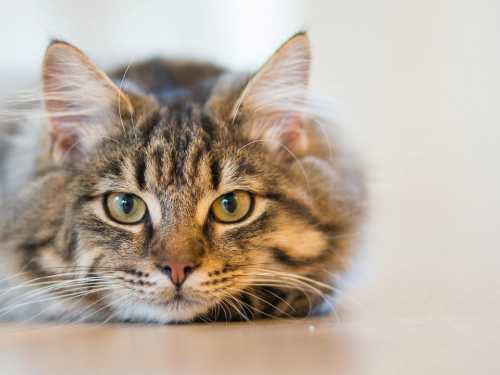
For experienced breeders, this question may sound trivial, but even among them there is no consensus. Some prefer raw meat, others – high-quality ready-made food, and some combine both options. But novice cat lovers often get lost in the intricacies of their pets' menus.
What happens if you give a cat raw meat?
Cats are obligate carnivores, and their digestive systems are well-adapted to digest meat, including sinews, cartilage, and small bones. Cat gastric juice is indeed very acidic, helping to kill most bacteria and partially dissolve small raw bones.
But remember: raw meat is never completely safe. It can contain pathogens – salmonella, E. coli, listeria or parasites (for example, toxoplasma). Therefore, feeding raw meat always carries risks for the cat and even for people in the house (due to possible infection through contact).
Can a cat eat boiled meat?
Cooked meat is safer from the point of view of infections: heat treatment destroys bacteria and parasites. During cooking, some nutrients are indeed lost – in particular, taurine and partly B vitamins – but the protein is not “destroyed”, but only changes its structure. For cats, this is not critical if meat is not the only product in the diet.
The problem is that if you feed your cat only cooked meat without additional vitamins and minerals, the diet will be unbalanced. That is why veterinarians usually recommend either high-quality commercial food or specially formulated balanced diets.
Boiled bones (especially chicken bones) are really not good for cats: after cooking, they become brittle and can cause harm.
How to properly process raw meat for a cat?
If you do feed raw, it is important to minimize the risks:
-
buy meat only from trusted suppliers, but even this does not guarantee the absence of bacteria or parasites;
-
freeze it at -18°C or lower for at least 2-3 weeks, not just a few days — this will help destroy some of the parasites (but not the bacteria);
-
Defrost only in the refrigerator, slowly. The microwave creates “hot spots” where bacteria multiply quickly;
-
do not give minced meat: it is better to cut it into thin slices. Minced meat spoils faster and has a higher risk of infection;
-
Be sure to wash your hands and surfaces after contact with raw meat.
Conclusion
Raw meat can be part of a cat's diet, but it carries risks and requires strict hygiene. Cooked meat is safer from an infection point of view, but is not always nutritionally complete. The most important thing is not to choose between “raw” or “cooked” as the only option, but to provide your cat with a balanced diet. The most convenient and reliable way is to use high-quality ready-made food or a diet compiled together with a veterinarian.





